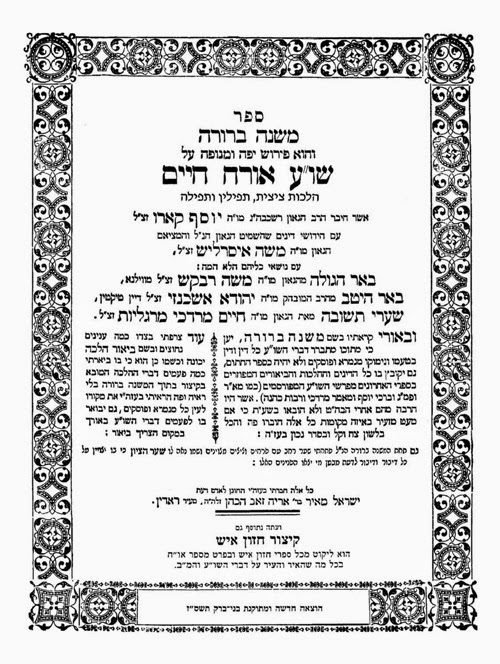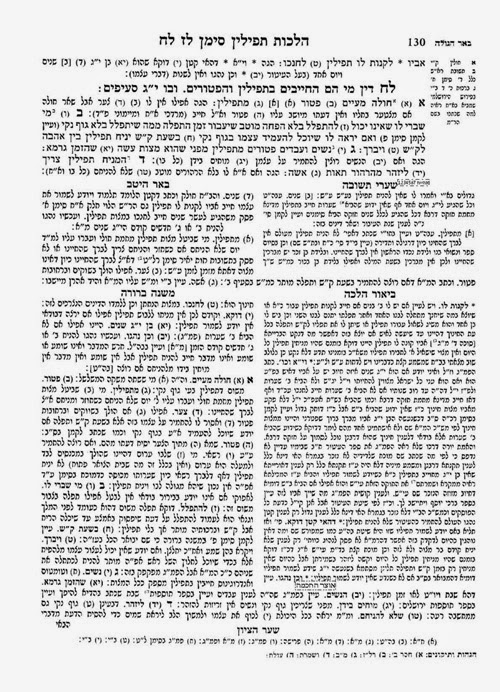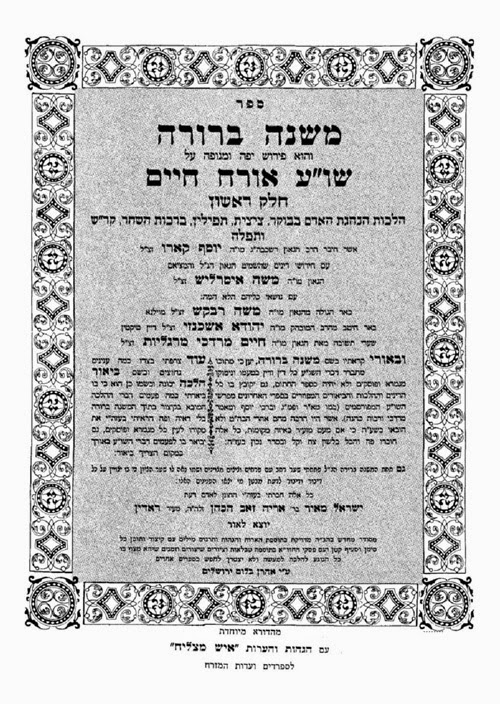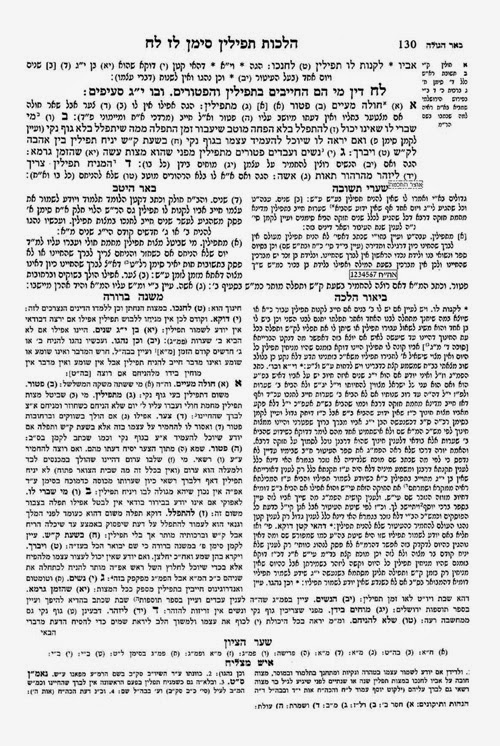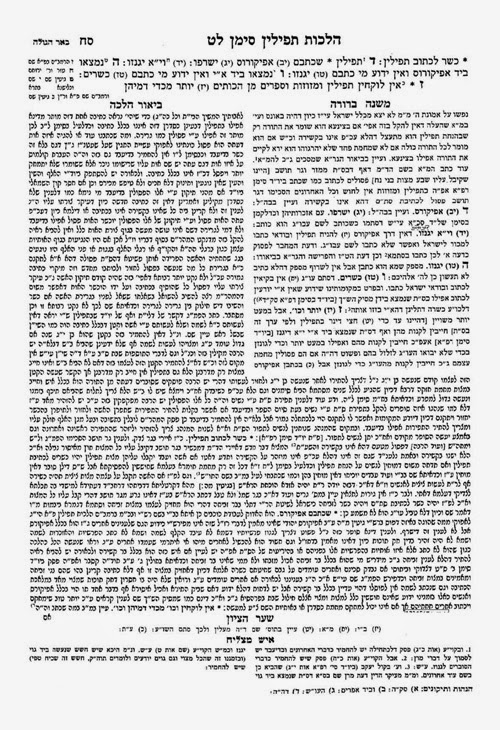The Seforim Blog thanks Ivor Jacobs for sending us this unpublished article by his father.
Demythologising the Rabbinic Aggadah: Menahem Meiri
by Louis Jacobs
Many of the mediaeval Jewish teachers, partly in defence of the Talmud against attack by the Karaites, partly because of their own rationalistic stance, engaged in what Marc Saperstein in a fine study [1] has called ‘decoding the Rabbis’. That is to say, passages, especially in the Talmudic Aggadah, which seemed to them offensive to reason and general religious sensibilities, these teachers interpreted in the light of their own philosophical views, treating the Talmudic Aggadah as if it were a code requiring to be deciphered. Whether or not the ancient Rabbis could have intended to say what these thinkers understood them to have said, whether the Talmudic literature does ever partake of a code, is, of course, quite another matter. Rabbinic thought, whatever else it is, is hardly in the philosophical and systematic vein [2].
This kind of allegorical interpretation of the Talmudic Aggadah, this demythologisation, is found among the Geonim [3], in Maimonides, [4) and even, on occasion, in Rashi [5]. the great French commentator usually indifferent to the philosophical approach. As Solomon Schechter said of the mediaeval French and German schools, they nether neither understood nor misunderstood Aristotle. It is not always appreciated, however, that Menahem Meiri of Perpignan (1249-1316) [6] employs this method throughout his voluminous commentaries to the Talmud as this essay seeks to demonstrate. (The page references are not to the numbers in the various editions of Meiri’s Bet Ha-Behirah but to the pagination of the Talmudic tractates on which he comments).
Without stating it explicitly, Meiri usually allows his readers to see for themselves that his interpretations are intended to avoid attributing to the Talmudic Sages perverse, superstitious or ridiculous notions even though a surface reading of the tests might seem to imply that such notions are acceptable. The following provide examples of Meiri at work in this connection. They are arranged under a number of headings but these are not to be taken too categorically since there is considerable overlapping and do not appear in Meiri’s own writings. Meiri’s chief aim is to explain the Talmudic texts as these appear in the order of the tractates. His methodology has to be assessed by implication.
Anthropomorphism
On the statement (Bava Batra 25a) that the Shekhinah is in the West. Meiri remarks that this in no way implies that God has any spatial location (‘Heaven forbid,’ Meiri adds) but only to indicate that it is preferable not to face East in prayer in order to protest against worshippers of the sun which rises in the East. Nowadays, we do face East in our prayers, adds Meiri, but that is in order to face Jerusalem.
The passage (Berakhot 6a) in which it is stated that the Shekhinah is present when ten assemble in the synagogue for prayer, is interpreted psychologically by Meiri: ‘Whenever a man is able to offer his prayers in the synagogue he should do so since there proper concentration of the heart is possible. They [the Rabbis] have laid down a great principle that communal prayer is desirable and that those who offer their prayers in the synagogue where ten are present the Shekhinah is with them’, This means, presumably, that the ability to concentrate adequately on the prayers is for the worshippers to be nearer to the Shekhinah and hence the Shekhinah is with them.
In the same Talmudic passage it is stated that where three judges sit together judging a case the Shekhinah is with them and when two scholars study the Torah together, instead of each one on his own, their words are recorded in ‘the book of remembrance’ (Malachi 3:16). Evidently, in order to avoid ascribing a spatial location to the Shekhinah and in order to avoid the suggestion that there is a book ‘up there’, Meiri paraphrases:
Let a man take care not to judge a case on his own and should always be one of
three judges. For wherever there are three judges, two of them will argue it
out while the third one will clarify the matter and weigh it up. In this way they
will avoid error and it will be said of them that the Shekhinah is with them.
And so it is with regard to the study of the Torah. Even though this is
desirable and praiseworthy whenever it occurs, where there are two who study
together it is far better for as a result there will be a greeter clarification
of the truth. Furthermore, since each one debates the subject with the other,
the subjects studied become more firmly fixed in their memory. This is what the
author of the saying meant when he said that where two are present their words
are recorded in the book of remembrance.
Meiri has a similar comment of the passage (Berakhot 6b) that when God comes to the synagogue and does not find the quorum of ten present there at the time of communal prayer He is immediately angry. Meiri remarks:
Let the members of a community be energetic in arriving at the synagogue as soon as
the time of prayer has begins. For when time of prayer has come and there is no
quorum in the synagogue it is most disgraceful, demonstrating that the hearts
of people in that city are distant from God and such distance constitutes the
greatest anger and the worst form of wrath. This is what they [the Rabbis]
intended when they said God is immediately angry.
Meiri is evidently bothered not only by the notion of God coming to the synagogue, another spatial location, but also by the gross anthropomorphism that God becomes immediately angry. Meiri hence understands God’s coming to the synagogue to mean that when the members of the community fail to arrive in the proper time their failure to ‘come’ nearer to God represents His coming to the synagogue, as if to say, He is ever ready to hearken to their prayer but they have missed the opportunity and such lack of care constitutes divine wrath.
Again, Meiri is bothered by the Talmudic statement (Berakhot 32a) in which God is made to say to Moses: ‘You have revived Me with your words.’ In the Introduction to his Commentary to tractate Avot, Meiri states that the meaning is, by Moses’ demonstration that God’s existence is necessary rather than contingent God became a living reality for them.
A particularly interesting interpretation by Meiri is given to the passage (Shabbat 12b) in which it is stated that, except when praying on behalf of a sick person, prayers should not be recited in Aramaic, a language the ministering angels do not understand. Prayers for the sick can be recited in this language since the Shekhinah is already present when a person is sick. On a surface reading, the passage means that the ministering angels who do not understand Aramaic cannot bring the prayers to the Throne of God when the prayers are in Aramaic but, where the prayers are on behalf of the sick the mediation of the angels can be dispensed with since the Shekhinah is already there. Meiri’s interpretation relies on the passage (Berakhot 6a), in which it is stated that the Shekhinah is present when prayers are offered in the synagogue. Thus Meiri writes:
Let not a man ever offer supplication for his needs in Aramaic since this language
is not fluent in the mouths of people and they will fail to concentrate
adequately in prayers offered in a language they do not sufficiently
understand. Nevertheless since with regard to a sick person there is a greater
degree on concentration there is nothing to fear. And so do the Geonim write
with regard to communal prayers that these can be recited in any language since
the Shekhinah is with the community, meaning that the Shekhinah is with them.
Meiri here seems to understand the saying about the ministering angels as it were ironic. The Aramaic language is foreign even to the ministering angels who are good at languages. All the more is it foreign to ordinary folk. Thus Meiri neatly side-steps the notion of the angels having to bring the prayers to God. Just as in communal prayer the Shekhinah is there, namely, the type of concentration expressed by the presence of the Shekhinah (as above) so, too, where prayers are offered for the sick, the degree of concentration is sufficiently intense for it to denote the presence of the Shekhinah. There is adequate concentration even when the prayers are offered in a foreign language
Magic and Superstition
In his commentary to the verse: ‘The simpleton believes everything’ (Proverbs 14:15) Meiri observes that the question whether demons exist is a matter not of faith but of investigation. [7] There is no categorical denial of the existence of demons. Nevertheless, throughout his commentaries Meiri prefers to understand Talmudic references to demons in a non-literal fashion.
In tractate Avot (5:8) an opinion is stated that mazikin were created at twilight of the first Sabbath of Creation. The word mazikin (the ‘harmful ones’) is usually understood as the malevolent demons. But Meiri renders it as ‘things not normally found in the natural order’ and he puts forward a further idea that the term denotes the yetzer ha-ra (evil inclination). This inclination is undoubtedly harmful but also beneficial to human life since it provides humans with life’s driving force. Hence it is a twilight thing, belonging and yet not belonging to the beneficent aspect of creation.
The statement in tractate Eruvin (43a) regarding the vast distances covered on the Sabbath by one Joseph the Demon by flying in the air seems to be understood by Meiri as denoting a skilful acrobat performing devil dare acts flying through the air (on stilts?).[9] On the statement (Berakhot 3a) that one of the reasons why it is forbidden to enter a ruin is because of mazikin, Meiri paraphrases this as ‘anything that may cause harm’. On the statement (Berakhot 4b) regarding the recital of the Shema before retiring to sleep, Meiri quotes the Jerusalem Talmud (Berakhot 1:1, 2d) that the purpose of this recital is to drive away the mazikin. Meiri notes that the definite article is used, ha-mazikin, ‘the mazikin’ which, he says, refers to the known harmful ones, namely, thoughts of unbelief which tend to invade the mind when man is on his bed and against which the recital of the Shema is the antidote. This is why the Talmud exempts a scholar from the recital since such a person is immune, in any event, to heretical or idolatrous thoughts [10].
A well-known Talmudic passage (Bava Kama 21a), dealing with the question of whether a squatter has to pay rent, proved embarrassing to Meiri since the law seems to depend on a belief in demons. The teacher Rav is reported as saying, one who occupies a neighbour’s premises without having an agreement so to do is under no obligation to pay rent. This is because Scripture (Isaiah 24:12) says: ‘Through Sheiyyah even the gate gets smitten’. The usual translation of Sheiyyah is ‘emptiness’ or ‘desolation’. But the Talmud seems to understand Sheiyyah as a demon i.e. the squatter benefits the owner of the premises since by living in the premises he keeps away the demon Sheiyyah who haunts uninhabited houses. The Talmud adds that Mar son of Rav Ashi said: ‘I saw him myself and he resembled a goring ox’. Meiri simply writes that the squatter benefits the owner since an empty house becomes desolate there being no one to take care of it properly, understanding Sheiyyah as ‘desolation’. Meiri ignores the report of Mar son of Rav Ashi, unless he understands this teacher to be saying that the effect of leaving as house empty and desolate is as if a wild ox had been let loose there.
On the famous Talmudic passage (Sukkah 28a), where it is said that Rabban Johanan ben Zakkai knew ‘the speech of the demons, the speech of palm trees, and the speech of the ministering angels’, Meiri offers the explanation that he knew how to talk about these creatures, not that he understood what these creatures were saying. Among some of the Geonim there was a tradition according to which if a sheet was spread between two palm trees it could serve as a means of divination and this is ‘the speech of the palm trees’ which Rabban Johanan ben Zakkai
knew. Meiri prefers to understand the passage in a non-magical way, paraphrasing the whole as: ‘matters of great wisdom regarding the natural order of the universe and the supernatural’.
Meiri is certainly not unaware that there are passages in the Talmud based on superstitious beliefs. Unwilling to accuse the Talmudic Rabbis of really entertaining such beliefs, Meiri has recourse to the idea that, while the Rabbis themselves did not believe in the superstitions, they were prepared to tolerate them as a sop to the ignorant masses for whom certain ideas has become so firmly fixed in their minds that nothing could be done to eradicate them. A good example of this attitude is Meiri’s comment to the Talmudic passage (Pesahim 109b-110b) on the avoidance of zuggot (‘pairs’), things that come in even numbers. Here the Talmud states that one should not eat an even number of items of food or drink an even number of cups of wine at the same meal. In that case, the Talmud asks, why do we drink four cups of wine on Passover at the Seder? The reply is that Scripture says of this night: ‘It is a night of guarding’ (Exodus 12:42), which verse is taken to mean: ‘lt is a night of guarding from the mazikin’.
Here Meiri could hardly ignore the fact that the Rabbis must mean understand the term mazikin as harmful spirits who attack those who eat or drink by ‘pairs’ who are powerless to carry out their nefarious designs on this single night. Meiri’s comment should be quoted in full as indicative of his opposition to superstition while acknowledging that superstitions are found frequently, especially in the Babylonian Talmud.
We have often explained that in those times people were attracted to vulgar things
such as incantations, divinations, and other such base practices. For as these
did not partake of the ways of the Amorites [the Talmudic term for illegal;
practices with pagan associations] the Sages did not bother to eradicate them,
still less those which had become too deeply fixed in their [the masses’] minds
whether their belief be strong or weak. As this very passage attests: ‘One who
takes it seriously it has an effect. One who refuses to take it seriously it
has no effect’ Belonging to these topics is that which comes in pairs. Now when
the Sages ordained the drinking of the four cups and refused to tolerate either
diminution nor addition because of such ridiculous notions, they were obliged
to state a reason for a departure from that to which they [the masses] had
become accustomed. So they gave the reason that this night is one of protection
from the demons.
Meiri adopts a similar line in many of his commentaries.
Another striking example of Meiri avoiding a too stark and crude invocation of the supernatural is his comment to the passage (Kiddushin 70a) that when a man marries a woman unfit for him ‘Elijah binds him and the Holy One, blessed be He, flagellates him.’ Meiri understands this to refer to a woman unfit to be married to the man because she is of base ancestry, though her actual legal status is uncertain. Since she comes from a disreputable family this might be an indication that she is legally unfit. Meiri continues:
lt is with this in mind that they [the Rabbis] say that Elijah binds him. That is
to say, philologically and in popular usage Elijah denotes the clarification of
doubtful cases [11] so that her doubtful status will cause him constant
anxiety, this being expressed by him being bound, until he will eventually come
to realise that he will never enjoy any blessing from her and he will come to
appreciate that she is really legally unfit for him. This is the meaning of
‘the Holy One, blessed be He, flagellates him’. This is a parable for the
punishment he deserves.
Dreams
Meiri, in his major extant work, the Bet Ha-Behirah, generally confines his detailed comments to the Halakhic passages, though he frequently quotes the Aggadah where this has practical consequences and thus becomes Halakhah in a sense. He does not explore in any depth lengthy Aggadic passages which have no practical application.
It is, consequently, not surprising that he has only one comment on the famous passage on dreams in tractate Berakhot (55a-57b). The passage contains the formula for ‘making good’ a bad dream (Berakhot 55b). If a man has had a bad dream he should assemble three men and say to them: ‘l have had a good dream’ and they should say to him: ‘Good it is and let it be good. May the All-Merciful turn it to good: seven times may it be decreed concerning thee from Heaven that it be good and may it be good.’ They should then recite three Scriptural verses in which the word ‘turn’ occurs; three verses in which the word ‘redeem’ occurs; and three verses in which the word ‘peace’ occurs. The passage continues that if as man has had a dream the true nature of which he does not know, he should stand in front of the priests when they recite the Priestly Blessing and offer a prayer, given in the passage and later incorporated into various liturgies that his dream be turned to good (i.e. if it is really a bad omen).
All this, obviously partaking of the magical, proved extremely puzzling to the philosophical mind. Meiri does, in fact, refer to the formula as a lahash (‘incantation’) but proceeds to soften the starker magical elements in the procedure, by, as his wont, understanding the procedure more for the psychological than the magical effect. Meiri writes: ‘Whenever a man is troubled, even by a very minor thing, he should scrutinise his deeds and allow it to bring him to repentance. Even when all that happens to him is no more than the fright caused by a bad dream, he should examine [his deeds] and should worry about it so that it moves him to repentance. If it [the dream] has made him very anxious he should go to three men and say to them . . .’ Meiri continues with the formula given in the Talmudic passage.
Interestingly he reads the ‘incantation’ as actually saying: ‘seven times may it be decreed’ and he rejects the version according to which the formula be recited seven times, presumably because a sevenfold repetition would smack too much of the magical. Meiri also seeks to avoid the magical element in the resort to the Priestly Blessing: ‘If he saw a dream the nature of which he cannot fathom, not knowing whether it is good or bad so that his soul is disturbed, he should arrange [to present his special prayer] for the time when the congregation has particularly strong intention, namely at the time of prayer, and certainly at the time when the priests raise their hands and the congregation responds with Amen with special concentration, and he should then offer his own prayer.’ Meiri is obviously concerned lest the Priestly Blessing itself be used as a form of incantation.
The time of the Priestly Blessing is a time when the congregation is especially attuned to concentration and this will help the individual to concentrate on his plight causing him to repent. Here, again, Meiri’s stress on the psychological benefits, on the subjective rather than the objective. lt is not a question of a man removing his anxieties by the utterance of certain words but by removing his anxieties by improving his character. As Evelyn Underhill has put it, the difference between magic and mysticism is that magic takes while mysticism gives.
Figurative Explanation
Meiri frequently states explicitly that, in his opinion, the Rabbis say this or that only as a parable or a hint at some good practice and that they never intended that what they say be taken literally. On the statement in the Talmud (Kiddushin 50b) that God created the Torah as an antidote to the yetzer ha-ra (‘evil inclination’) just as a human king who has wounded his son will provide the son with a plaster to keep on the would to prevent it festering, Meiri comments: ‘Whosoever is diligent in his study of the Torah, even if he has sinned because of the power over him of the evil inclination and he has grown up with evil defects of character, the Torah will shield him. That is to say, it is impossible for the Torah not to train him to overcome them [the evil defects of character] and not to prevent him from becoming submerged in them.’ Meiri them quotes the parable of the king and his son and says: ‘They said ‘by way of note.’” Clearly, Meiri is anxious, as always, to avoid attributing quasi-magical powers to the study of the Torah. The study of the Torah enables the student himself to become a better person.
A similar interpretation by Meiri is of the Talmudic passage (Rosh Ha-Shanah 16b) which states that when a man is in trouble he should change the place where he resides and change his name. A surface reading might convey the thought, totally unacceptable to a thinker like Meiri, that a man can prevent God’s judgment by escaping to another place where God cannot find him (reminiscent of Jonah) or by changing his name. Meiri sees in the change of place and of name as no more than devices through which a man becomes another person i.e. by causing him to give up his former bad ways, repenting and making a new start in life [12].
Similarly, on the statement (Berakhot 7b) that when a man has a fixed place in which to offer his prayers, his enemies fall before him, Meiri (evidently having the reading ‘fixed place for his studies’, not ‘for his prayers’ as in the current edition) paraphrases it as:
Even if a man finds himself broad of heart, with a quick grasp and a good memory, he
should not be soft on himself by failing to have a fixed place [a permanent
place in which to study]. Whoever does have a fixed place will be successful in
his studies and obtain the victory over those who disagree with him. This is
the meaning of ‘his enemies will fall before him’.
Again Meiri is anxious to avoid any suggestion that the Torah is a magical weapon by means of which the student’s foes are vanquished. The ‘enemies’ are colleagues of whom the student will get the better when thy argue things out since, as a result of him having a fixed place for his studies, he has become more proficient in learning.
Meiri takes in a non-literal fashion [13] the teachings about the neshamah yeterah (‘additional soul’) with which man is endowed on the Sabbath (Beitzah 15a). This has to be understood not that a man has more than one soul on the Sabbath but that his soul is enlarged. Free from material concerns on the Sabbath, man devotes himself to spiritual things in a manner of which he incapable on the ordinary days of the week The neshamah yeterah refers to greater soulfulness, a more powerful experience of the spiritual life.
Meiri. in his commentary [14] to tractate Avot, quotes the Midrash (Genesis Rabbah, chapter 1) in which it is stated that the Holy One, blessed be He, looked into the Torah and then created the world. The surface meaning of this is that God used the Torah as an architect uses his blueprint! This is how the Midrash is conventionally and undoubtedly correctly understood. But Meiri finds it more in line with philosophical thinking to understand the saying to mean that God foresaw that He was to give the Torah that would keep mankind on the right path and He therefore created the world. Similarly, in his comment on the statement (Avot 2:1) ‘All thy deeds are written in a book.’ Meiri refuses to treat this as a kind of divine book-keeping but understands it to mean that a man should see his sins as if they were written in a book and which therefore cannot be erased except by resentence.
On the statement (Avot 2:14) ‘Warm thyself by the fire of the sages; but beware of their glowing coals’, Meiri is at pains to point out that this does not mean that the sages have a kind of death ray with which they harm those who come too near to them. According to Meiri the meaning is that one should be warmed through the nearness of the sages but should not become too familiar with them. The saying expresses the need to draw a balance between the familiarity that breeds contempt and the remoteness that is conducive to respect.
Meiri belongs firmly in both the Halakhic and the philosophical traditions, with the emphasis on the former. Or rather he explains both the Halakhah and the Aggadah of the Talmud in such a way as to satisfy both the Halakhic and the philosophical mind. Yet every student of this master’s works knows that his style is all his own, a skillful and harmonious blend of the various trends of thought in his age which has a not inconsiderable attractiveness to modernists as well. This explains why, though the majority of his works have only seen the light of publication in comparatively recent times, they have been republished many times and have won such popularity that they now take their place beside Rashi and the Tosafists as essential guides to the Talmud.
Notes
[1] Marc Saperstein, Decoding the Rabbis: A Thirteenth Century Commentary on the Aggadah, Harvard University Press, 1980. The ‘Thirteenth Century Commentary’ is that of the hitherto unknown, Provencal scholar, Isaac ben Yedaiah, a contemporary of Meiri.
[2] On the problem of the Rabbinic Aggadah see Krochmal, Moreh Nevukhey Ha-Zeman, chapter 14, in The Writings of Nachman Krochmal, ed. S. Rawidowicz, London, 1961, pp. 238-256. On Rabbinic thinking as ‘organic’ rather than systematic, see Max Kadushin, The Rabbinic Mind. New York, 1965.
[3] See e.g. Otzar Ha-Geonim, ed. B.M. Lewin, vol. I, Berakhot, Haifa, 1928, pp. 2-3, on Elijah’s conversation with R. Jose, and pp. 130-132 on earth rumblings. See my Theology in the Responsa, London, 1975, pp. 6-10.
[4] See Maimonides’ Commentary to the Mishnah, Shabbat 2:5. that the ‘evil spirit’ mentioned in the Mishnah means a form of melancholia and Maimonides’ strong approval (Guide, III, 22) of the saying of R. Simeon ben Lakish (Bava Batra 16a): ‘Satan, the evil inclination and the angel of death are one and the same.’
[5] See Rashi’s comment on the story of the Rabbi who challenged Satan (Sukkah 38a) which Rashi understands as a challenge to man’s own evil inclination rather an external force. Cf R. Nissim of Gerona, the Ran, to Rosh Ha-Shanah 16b that blowing the shofar to confuse Satan means to confuse the evil inclination.
[6] For the little known about the life of Meiri see the article by I. Ta-Shema in the Encyclopedia Judaica, vol. 11, pp. 1257-1260 and Saperstein. op. cit., index ‘Menahem Meiri’.
[7] This reference is given in Sefer Ha-Middot Le-Ha-Meiri, ed. M. M. Meshi-Zahav, Jerusalem, 1967, p. 100, based on a Vatican manuscript of Meiri’s Commentary to Proverbs. There is a comprehensive examination of Meiri’s view on superstition in Marc Shapiro, ‘Maimonidean Halakhah and Supersition,’ in Maimonidean Studies, ed. Arthur Hyman, vol. 4, New York, 2000, pp. 61-108.
[8] Cf. Meiri to Makkot 6b on a warning given by a demon (shed) which Meiri understands as pure hyperbole (derekh mashal) and Meiri on the statement (Hullin 91a) that a scholar should not go out alone at night because the mazikin might harm him, paraphrased by Meiri as: ‘people may be envious of him and harm him’. In his comment to Taanit 22b Meiri understands a man afflicted by an evil spirit to be a man suffering from hallucinations.
[9] Meiri adds that the report in the passage about Elijah travelling vast distances refers to a skilful acrobat who, like Elijah, covers huge distance at one go and that Joseph the Demon was such an acrobat.
[10] In all probability Meiri is hinting here at Christian doctrines.
[11] Elijah is associated with the resolving of doubt in the Mishnah (Eduyot 8:7) and see my TEYKU: The Unsolved Problem in the Babylonian Talmud, London, New York, 1981, p. 235.
[12] This comment of Meiri is based on Maimonides. Yad, Teshuvah 2:4 but Meiri stresses the psychological effect to a greater degree.
[13] Hibbur Ha-Teshuvah, ed. Abraham Schreiber, Jerusalem, 1976, II, 12, p. 531.
[14] ed. B. Z. Prag, Jerusalem, 1964, Avot 1:1, ed. Prag p. 5.
